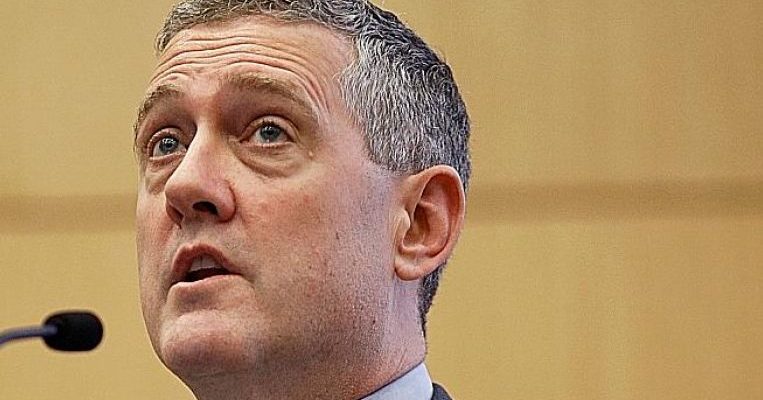
NEW YORK • The Federal Reserve may need to cut US interest rates soon to prop up inflation and counter downside economic risks from an escalating trade war, St Louis Fed president James Bullard said.
“A downward policy rate adjustment may be warranted soon to help recentre inflation and inflation expectations at target and also to provide some insurance in case of a sharper-than-expected slowdown,” he said on Monday in remarks prepared for a talk in Chicago.
“The direct effects of trade restrictions on the US economy are relatively small, but the effects through global financial markets may be larger.”
Mr Bullard’s comments mark the first time a Fed official has publicly suggested the need for a rate cut since the central bank put rates on hold in January, when it pledged to be “patient” as it weighed headwinds from slower global growth and the fallout from the trade war.
While United States President Donald Trump has called for a 1 percentage point cut, and investors deepened bets on policy easing after he threatened Mexico last week with tariffs, other Fed officials have stressed that their policy approach is still appropriate.
That was the message earlier on Monday from San Francisco Fed chief Mary Daly in Singapore, though Fed vice-chairman Richard Clarida opened the door to a cut in remarks last Thursday that stressed policymakers were watching risks to the outlook.
One of the most dovish members of the Fed, Mr Bullard is a voter this year on the rate-setting Federal Open Market Committee (FOMC), which meets on June 18-19 in Washington.
Minneapolis Fed president Neel Kashkari, who along with Mr Bullard has most vocally opposed higher rates in recent years, said last Friday during a Bloomberg TV interview that he was “not quite there yet” on the need for easing. Mr Bullard said recently that a rate cut was premature.
Mr Bullard’s comments mark the first time a Fed official has publicly suggested the need for a rate cut since the central bank put rates on hold in January, when it pledged to be “patient” as it weighed headwinds from slower global growth and the fallout from the trade war.
Fed officials are also worried about low inflation, which has persistently undershot their 2 per cent target throughout most of the current economic expansion, and its effect on inflation expectations.
“Financial markets appear to expect less growth and less inflation going forward than the FOMC does, a signal that the policy rate setting may be too restrictive for the current environment,” Mr Bullard said. “Even if the sharper-than-expected slowdown does not materialise, a rate cut would only mean that inflation and inflation expectations return to target more rapidly.”
Talking to reporters after his speech, he cited low inflation as well as trade and a “more serious” inverted yield curve as reasons for a possible rate cut.
Meanwhile, the Reserve Bank of Australia lowered the cost of borrowing for the first time in three years yesterday, hoping to extend a record 28-year run without a recession amid stiffening headwinds.
The central bank cut rates by 25 basis points to a historic low of 1.25 per cent, as the pace of growth slowed to levels not seen since the global financial crisis.
Australia dodged much of the global economic tumult of the past two decades as Beijing lapped up its vast iron ore, coal and other mineral deposits.
But now, rising unemployment, low wages, a housing slump and below-target inflation are stoking fears about the health of its economy.
The rate cut had been expected and analysts believe that more measures to juice the economy could be on the way. Already there is talk about the bank going a step further in improving liquidity, by buying up securities – known as quantitative easing.
BLOOMBERG
